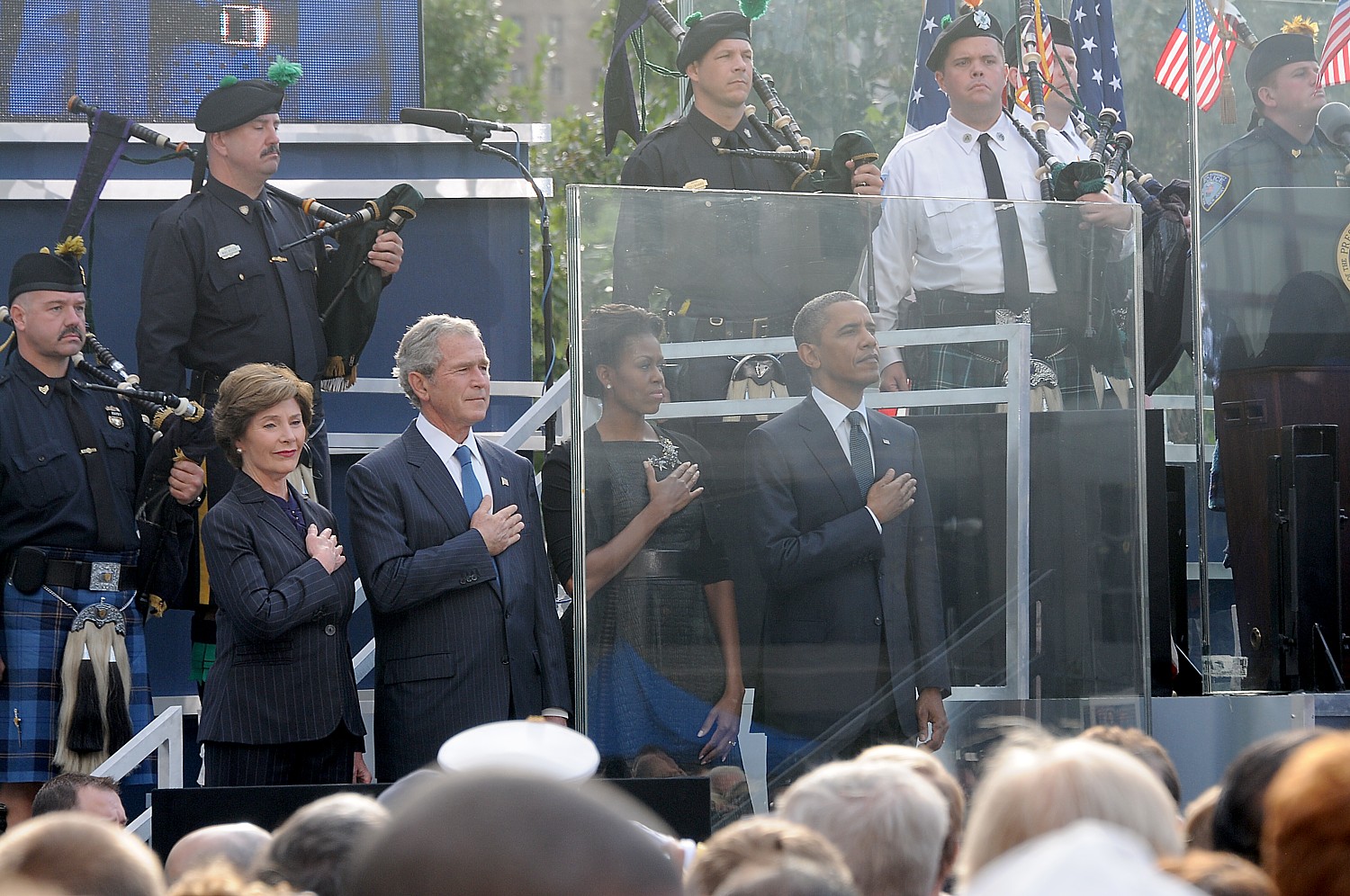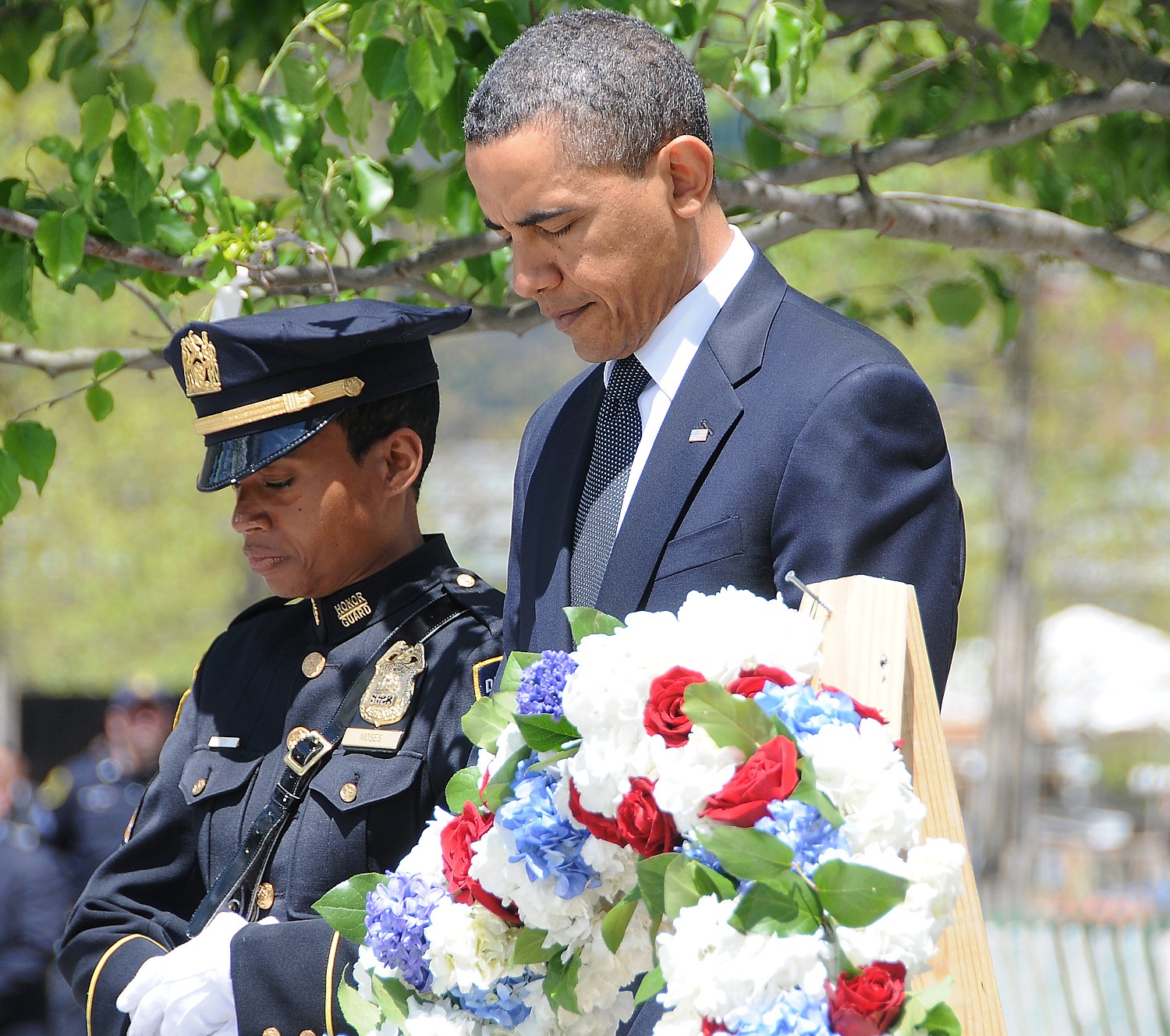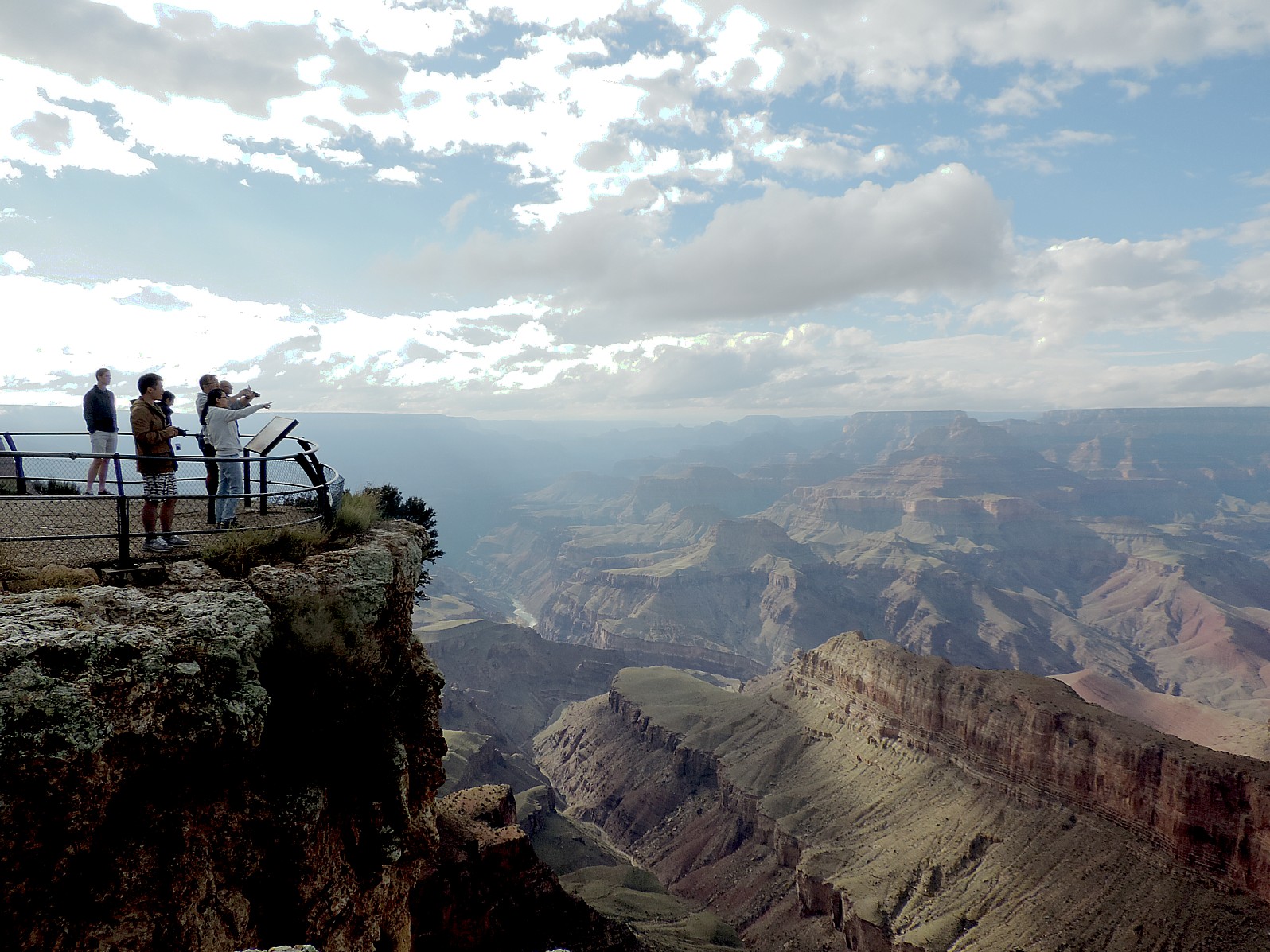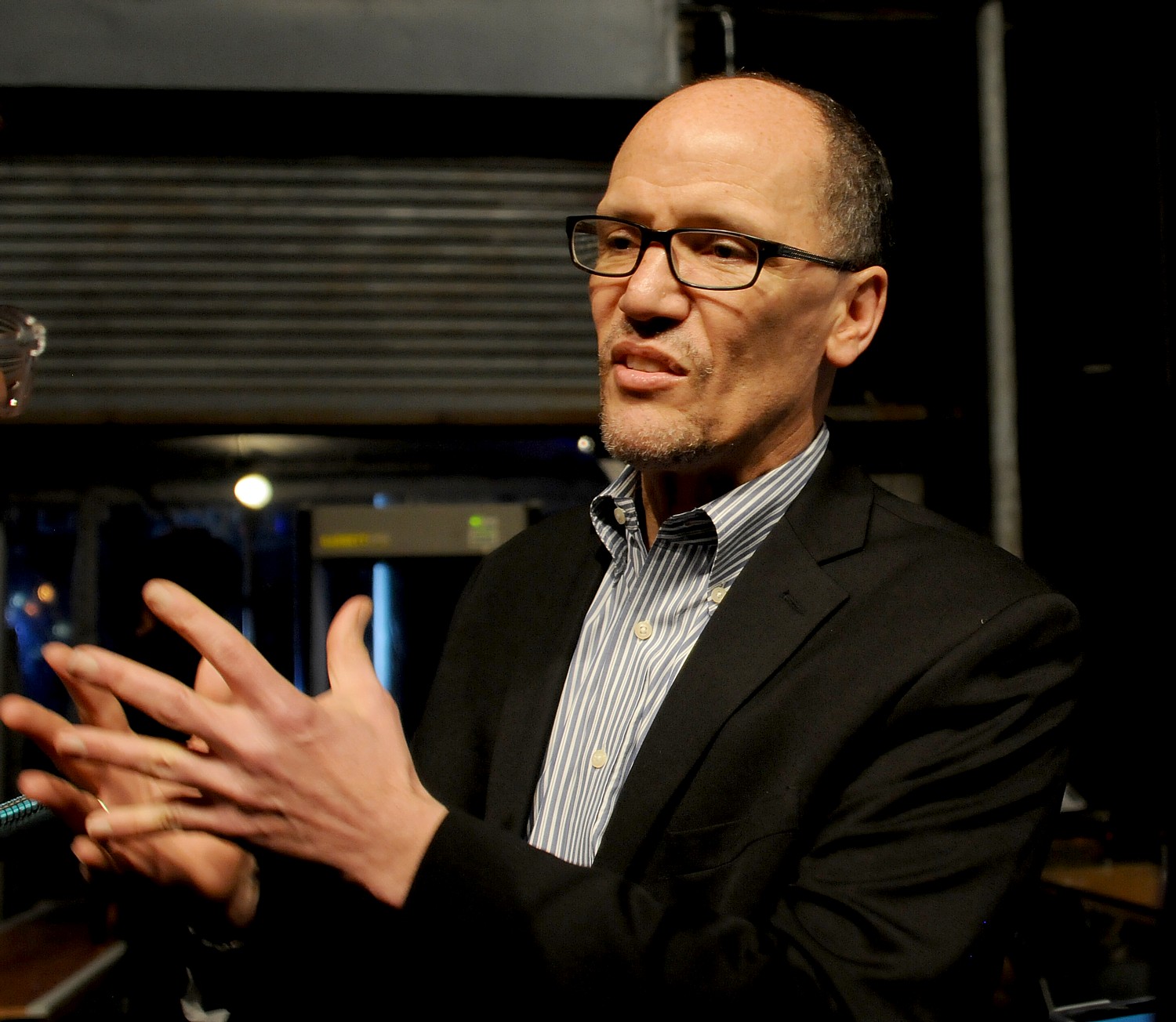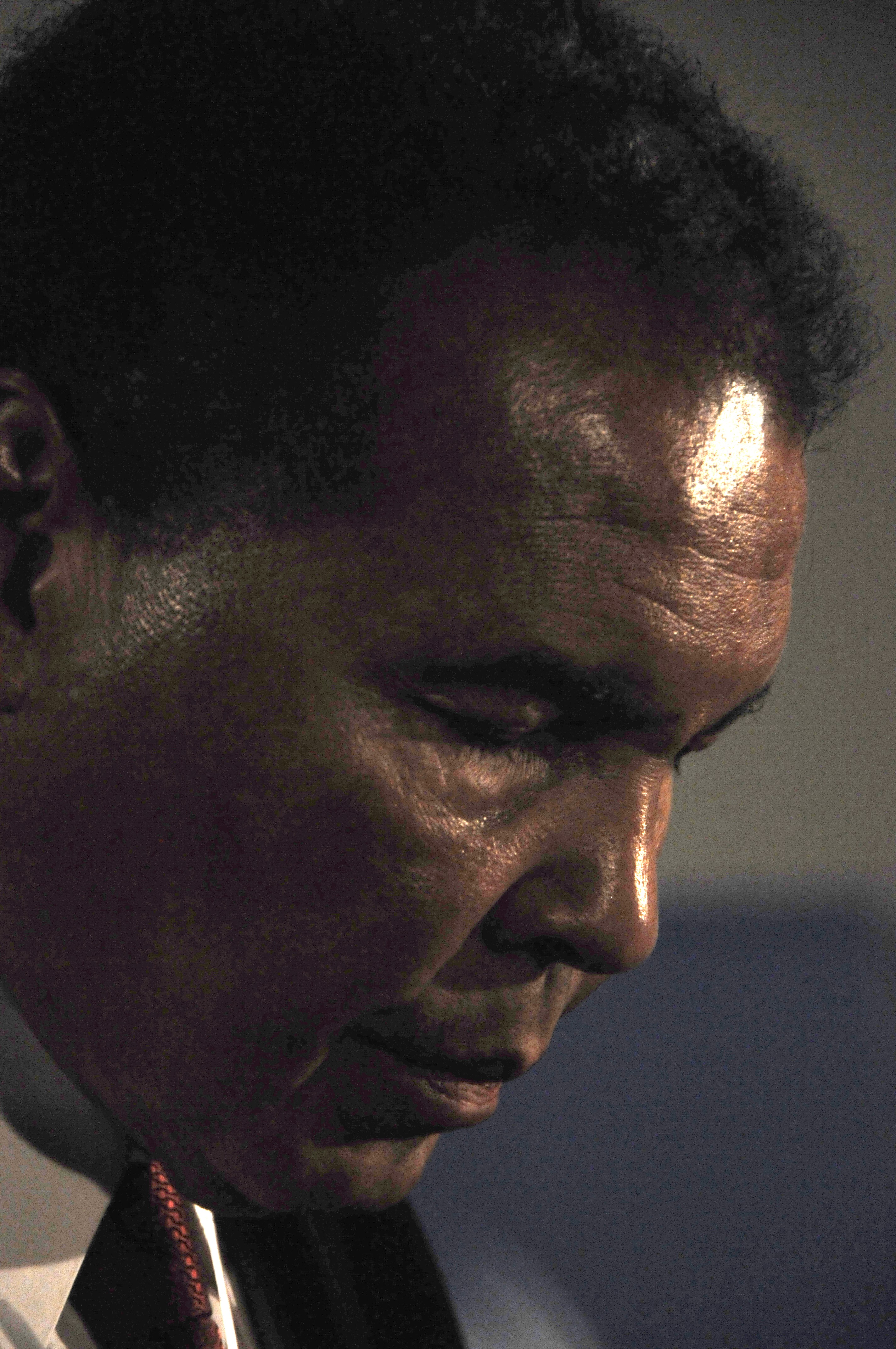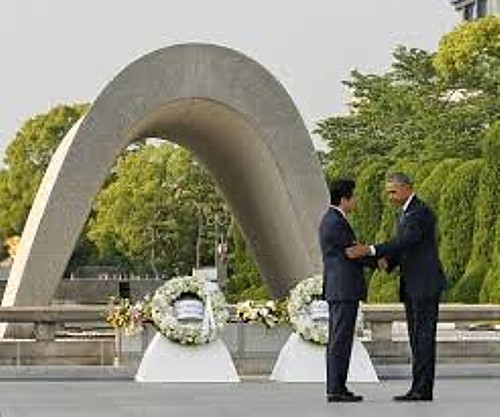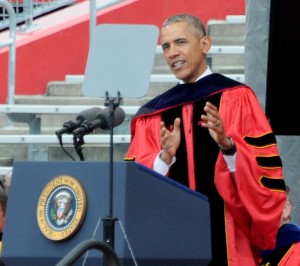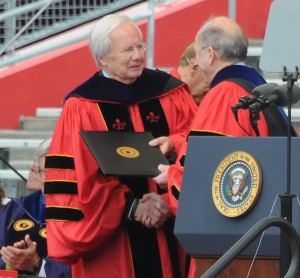
FACT SHEET: Administration Announces Additional Economic and Workforce Development Resources for Coal Communities through POWER Initiative
As part of President Obama’s continuing efforts to assist communities negatively impacted by changes in the coal industry and power sector, today the Administration is announcing the second round of grants awarded this year as part of the POWER Initiative’s “POWER 2016” funding opportunity that invests in economic revitalization and workforce training in coal communities across the country. The awards announced today, totaling nearly $28 million, will support 42 economic and workforce development projects in thirteen states that are building a strong economic future in communities, and targeting various industry sectors, including manufacturing, information technology, agriculture, housing, and tourism and recreation. The awards are administered by the Appalachian Regional Commission (ARC) and the U.S. Department of Commerce’s Economic Development Administration (EDA).
The POWER (Partnerships for Opportunity and Workforce and Economic Revitalization) Initiative is a community-based Administration effort involving ten federal agencies working together to align, leverage and target a range of federal economic and workforce development programs and resources to assist communities and workers that have been affected by job losses in coal mining, coal power plant operations, and coal-related supply chain industries due to the changing economics of America’s energy sector. The POWER initiative exemplifies a collaborative approach to federal partnership with communities that President Obama and his Administration have steadily advanced, which focuses on improving coordination across federal agencies, tailoring federal support based on local needs and priorities, encouraging local long-term strategic planning, and relying on data and evidence to inform solutions that work.
The POWER Initiative is the primary economic and workforce component of President Obama’s broader POWER+ Plan, part of his FY 2017 budget request to Congress. There is bipartisan legislation in Congress consistent with two of the President’s POWER+ proposals that could have a significant positive impact on workers, communities and retirees in coal country, and complement the POWER Initiative’s investments.
- The Miners Protection Act (S. 1714) and its House companion, the Coal Healthcare and Pensions Protection Act (H.R. 2403), mirror the President’s proposal to transfer federal funds to strengthen the solvency of the largest multi-employer pension plan serving retired coal miners and their families, and to extend health care coverage to additional retirees, more than twenty thousand of whom will start to lose their existing coverage at the end of this year.
- The RECLAIM Act (H.R. 4456), which is consistent with the President’s proposal to invest $1 billion in projects that link abandoned coal mine reclamation to economic development strategies, while stimulating economic activity and job creation in hard hit coalfield communities.
Congress has the ability to pass this legislation before the end of the year and send it to the President’s desk for his signature.
The awards announced today are from a competitive POWER federal funding opportunity that the ARC and EDA released in March of this year by to provide implementation, planning and technical assistance grants.
POWER Implementation Award Summaries:
- $3,000,000 ARC grant to Friends of Southwest Virginia in Abingdon, VA for the Building Appalachian Spring: Growing the Economy of Southwest Virginia project. This comprehensive project will significantly enhance the outdoor recreation industry as an economic driver in a four-county region in southwestern Virginia. ARC funds will be used to develop four access points to the New River that strategically link the river to nearby communities’ hospitality and tourism services; construct a 4,000 square foot Gateway Center to the High Knob Recreation Area – providing visitors with more centralized access to numerous nearby recreation assets; build an Appalachian Trail Center in downtown Damascus; and create a 30-mile, multi-use trail connecting Breaks Interstate Park directly to downtown Haysi’s business district. The project will increase travel expenditures in project locations by $30 million over the next five years, create 60 new businesses and 200 new jobs, and is supported by funding from the Virginia Tobacco Region Revitalization Commission.
- $2,220,000 ARC grant to the Industrial Development Authority in Wise, VA for the Virginia Emerging Drone Industry Cluster Project. ARC funds will be used to position five counties in southwestern Virginia as a national destination for the development of a drone-operator workforce to support the emerging drone industry in the United States. The award will enable Mountain Empire Community College to offer courses that train students, including former coal industry workers, to operate drones and drone sensors to provide commercial and government services – including geospatial surveys, close-up inspections of fixed structures, and mapping. The award will train 64 new workers, leverage $15,000,000 in additional investment, and enable a private aerospace company in the region to perform work on a major contract – thereby creating 210 new direct and indirect jobs.
- $2,040,000 EDA grant to the City of Bluefield, WV to support development of the Bluefield Commercialization Station project. Under this project the city, in partnership with the Shott Foundation, will rehabilitate and transform an existing 50,000 square foot freight station into an incubator to serve new and existing businesses. This project will provide high-tech business services including prototype development, product design and development, retooling, and supply chain assistance. This project will support the creation and retention of 72 jobs, expand at least 12 local businesses, and leverage $510,000 in private investment.
- $1,800,000 ARC grant to the Appalachian Wildlife Foundation Inc. in Corbin, KY for the Appalachian Wildlife Center Infrastructure project. ARC funds will be used to install water infrastructure at the future site of the Appalachian Wildlife Center, a conservation education and research facility. The Wildlife Center facility — located on 19 miles of reclaimed mine land — will feature the largest elk restoration and viewing effort in the United States. The facility will be modeled on the successful Elk Country Visitor Center in Benezette, Pennsylvania. The project will position a 10-county region in the tri-state area of southeastern Kentucky, northeastern Tennessee, and southwestern Virginia as a national tourist attraction, and will create 86 new jobs.
- $1,747,806 ARC grant to the Center for Rural Entrepreneurship in Chapel Hill, NC for the Building Entrepreneurial Communities: The Foundation of an Economic Transition for Appalachia project. The project will build and strengthen the entrepreneurial ecosystem in an 18-county region covering southeastern Ohio, southern West Virginia, and southeastern Kentucky. Project activities include establishing a support system that can identify and develop new entrepreneurs; assisting new and expanding businesses with skill development; and connecting entrepreneurs with existing capacity-building resources in the region. The project will create 72 new businesses and 250 new jobs.
- $1,558,850 EDA grant to the City of Belpre, OH, which, in partnership with the Buckeye Hills-Hocking Valley Regional Development District, will implement an infrastructure improvement project and extend sewer service two miles north of the city along Ohio Route 7 to accommodate large employers and businesses in the area. The completed project is projected to contribute to the retention of existing jobs and the creation of up to 255 new jobs, and to leverage over $3 million of new private investments.
- $1,502,938 ARC grant to Marshall University Research Corporation in Huntington, WV for the Sprouting Farms project. The project will facilitate the development of a vibrant agricultural industry in a nine-county area in southern West Virginia by educating new farmers, launching farm businesses, and jump-starting wholesale market channels, all while encouraging business and farm sustainability. ARC funds will be used to implement workforce and farm business accelerator training programs; secure and upgrade the project site and facilities; and provide direct business support and employment to new agricultural businesses and program graduates. The project will create 20 new businesses and 33 new jobs, and leverage $961,475 in additional investment. Additional funding is being provided by the Claude Worthington Benedum Foundation.
- $1,501,499 ARC grant to Marion County, TN for the Marion County Regional Center for Higher Education Phase II & III project. ARC funds will be utilized to construct a 30,000 square foot educational facility that will house new technology and industrial training programs. The project will also conduct outreach to displaced workers from the Widows Creek Power Plant – a coal-fired facility in the area that was recently retired. The project will train 109 people for careers in advanced manufacturing and information technology, and will improve 20 existing businesses in the region.
- $1,422,965 ARC grant to Hocking College in Nelsonville, OH for theAppalachia RISES (Revitalizing an Industry-ready Skilling Ecosystem for Sustainability) Initiative. The project will leverage the expertise of regional education, business, and government entities to deliver comprehensive workforce training services in employment fields that meet current and anticipated industry needs in North Central Appalachia – including advanced energy, automotive technology, petroleum technology, welding, and commercial driver’s license (CDL). The project will train 306 workers over the life of the award, and primarily serve a 17-county region covering southeastern Ohio and central West Virginia.
- $1,420,219 ARC grant to Southwest Virginia Community College (SWCC) in Cedar Bluff, VA for the Southwest Virginia Regional Cybersecurity Initiative. The initiative brings together three colleges in southwestern Virginia – SWCC, Mountain Empire Community College (MECC), and University of Virginia’s College at Wise (UVa-Wise) – and aims to position this seven county southwestern Virginia area as a regional hub for the cybersecurity industry. Specific activities will include creating a certification/credential program aligned with industry needs and National Security Agency guidelines; providing support services to cybersecurity start-up companies that locate to the region; and expanding UVa-Wise’s existing bachelor’s degree program in cybersecurity through an accelerator space in which cybersecurity companies can co-locate research and development activities. Additional funding for the project is being provided by the Virginia Tobacco Region Revitalization Commission. The project will train 161 new workers, and retain 110 jobs.
- $1,000,000 ARC grant to the Federation of Appalachian Housing Enterprises, Inc. (FAHE) in Berea, KY for the Appalachian HEAT Squadproject. ARC’s investment will be utilized to improve the energy efficiency of low-income homes in coal-impacted communities across a nine-county region in eastern Kentucky — while also creating entrepreneurial and skills-based training opportunities in the area. The project will partner with Hazard Community and Technical College and the Mountain Association for Community Economic Development (MACED) to deliver the entrepreneurial education and construction training component, and with two other training organizations to increase the skill-base for private housing contractors operating in the region. The project will create or retain 119 jobs, increase the quality, affordability, and performance of over 270 homes, and leverage $525,000 in private investment.
- $790,118 EDA grant to the University of Utah, in Salt Lake City, UT, in support of the Coal Pitch Technical Plan. Working in partnership with the University of Kentucky, the University of Utah is addressing the regional and national contractions in the coal economy by examining new commercially-viable uses for coal byproducts. The project will evaluate the feasibility of converting coal pitch to carbon fiber to produce lightweight, high-strength composites that are increasingly in demand by manufacturers in automotive and other sectors. This grant will be used to produce, test and classify coal pitch carbon fiber, design a regional supply chain map, and pair workforce needs with the economic impact of the conversion process/market.
- $662,567 ARC grant to the Southwestern Pennsylvania Corporation in Pittsburgh, PA for the Southwest Pennsylvania Economic GardeningInitiative. ARC funds will diversify the business operations of supply chain industries in a 10-county region in southwestern Pennsylvania. Working with Catalyst Connection (the regional Manufacturing Extension Partnership), the project will focus on small manufacturing establishments (SMEs) in the coal supply chain by providing mini-grants to targeted firms that enable the most impactful business development strategies to move forward quickly and efficiently – with a specific emphasis on increasing access to advanced manufacturing technologies. In addition, the project will target freight and logistics firms operating along the waterways of southwest Pennsylvania to increase their competitiveness by identifying and prioritizing new markets and opportunities. The project will create or retain 330 jobs, serve 55 supply chain businesses, and leverage $25,000,000 in private funds.
- $649,958 EDA grant to Western State Colorado University, in Gunnison, CO, in support of the Innovation, Creativity, & Entrepreneurship (ICE) House and ICE Accelerator Innovation Center project. The ICE House will feature a collaborative co-working center and innovation lab for community and campus entrepreneurs to work together and support each other’s creations. Grant funds will be leveraged to attract investment from angel networks and venture capital firms to create new job opportunities for the City of Gunnison’s workforce, and provide stable and high-wage economic diversification beyond the coal and hospitality industries that the local economy is currently reliant on.
- $500,000 ARC grant to Innovation Works, Inc. in Pittsburgh, PA for theRevitalization of Southwestern Pennsylvania Coal-Impacted Communities through Innovation and Entrepreneurship project. ARC funds will be used to implement five different but complimentary programs designed to deliver a variety of benefits to entrepreneurs and small businesses in a nine-county region in southwestern Pennsylvania – including the provision of human resource services to early-stage, high-growth companies, and training services for existing small businesses. Programs will target entrepreneurs who were formerly employed in the coal industry, coal-fired power plants, and suppliers to those industries. The project will create 65 new jobs and 7 new businesses, leverage $1,100,000 in additional investment, and retain 30 existing jobs.
- $499,480 ARC grant to RAIN Source Capital, Inc. for the Appalachia Angel Investor Network project. ARC funds will enable the awardee to work with existing and new angel investment funds to enhance the capability of coal-impacted communities across 9 Appalachian states to make investments in start-up, early stage, and growth companies. Specifically, the project will create at least four new angel funds in target communities, and will provide tools, training, and support services to existing angel funds and networks already operating in Appalachia. The project will result in the creation of 20 new businesses and 100 new jobs, and will leverage $4,000,000 in private investment from 100 investors.
- $400,000 ARC grant to Erwin Utilities in Erwin, TN for the Temple Hill & Bumpus Cove Broadband project. ARC funds will be used to install 35 miles of fiber optic cable on existing pole lines – allowing business and residential subscribers in Temple Hill and Bumpus Cove access to broadband services. The area does not currently have cable broadband available and DSL service is not offered ubiquitously. Tourism expansion is a major economic driver in the area and increased bandwidth will help expand the tourism industry and revenue base. The project will serve 680 households and 30 businesses, and will act as an economic driver in a three county area in northeast Tennessee, which has been adversely affected by the closure of a major rail yard as a result of the decline in coal shipments.
- $362,989 ARC grant to the Center for Rural Health Development, Inc. in Hurricane, WV for the WV Rural Health Infrastructure Loan Fund project. ARC funds will assist in capitalizing a revolving loan fund designed to strengthen the health care industry in a 25-county region in central West Virginia. In addition, the award will provide technical and business development assistance to existing health care providers with business-related needs. The project will create or retain 65 jobs, yield $1,000,000 of financing for health care businesses, and provide 216 organizations with technical assistance.
- $353,086 ARC grant to the Town of Unicoi, TN for the Mountain Harvest Kitchen Incubator & Entrepreneurial Training Program. ARC funds will purchase equipment for a shared-use, commercial kitchen where value-added processing of locally-harvested products will take place. Entrepreneurial training will be offered by partner organizations including AccelNow, the Appalachian Resource Conservation and Development Council, and the University of Tennessee Agricultural Extension for start-ups and established businesses in the agricultural sector. The program will serve a nine-county region in northeast Tennessee and northwest North Carolina, create 30 new businesses and 60 new jobs, serve 91 trainees, and leverage $1,200,000 in private investment.
- $301,916 EDA grant to the Centralia College Robotics Workforce Trainingproject in Centralia, WA. This award will help fund a workforce development project in alignment with a strategic plan designed by the Lewis Economic Development Council with support from an EDA POWER 2015 planning grant in response to the retirement of a local coal power plant. The project will support the acquisition of equipment for use in a workforce training program at Centralia College, which will train the region’s workforce to use the most current robotics technology. Prospective employers and supporters of the program include The Boeing Company and the Fluke Corporation.
POWER Planning Grant and Technical Assistance Award Summaries:
- $960,000 EDA grant to the Pennsylvania Department of Community and Economic Development (DCED) in Harrisburg, PA, in support of theRepositioning Pennsylvania’s Strategic Assets project. In partnership with FirstEnergy, Exelon, regional and economic development organizations, and potential buyers, DCED will coordinate efforts to evaluate the potential of commercially repurposing retired coal-fired power plant sites throughout the state. These sites are often located on strategically valuable real estate located along rivers and often near downtown areas. They have critical infrastructure already in place and feature rail and road access, and water, sewer, and transmission lines, and therefore hold the potential for commercial redevelopment and subsequent economic diversification and job creation.
- $400,000 EDA grant to the National Association of Counties (NACo) and the National Association of Development Organizations (NADO) in Washington, DC in support of theTechnical Assistance for Coal Communities project targeting Colorado, Wyoming, Montana, and Utah. The project will provide technical assistance to communities whose economies have been severely impacted by the declining use of coal, and will build on the success of the Innovation Challenge for Coal-Reliant Communities, a program that the co-awardees jointly implemented from 2014 to 2016 with the support of the EDA. Community leaders will participate in intensive training workshops, and receive peer networking opportunities and mentoring resources related to economic diversification, job creation and long-term, place-based economic development strategies.
- $375,000 EDA grant to Citizens Energy Group, in Indianapolis, IN, in partnership with the City of Indianapolis, the Central Indiana Community Foundation and local community development corporations. The award will fund the development of a site assessment and reuse and implementation strategy for a former coke coal manufacturing facility located in the Indianapolis Promise Zone. The project will identify potential reuse strategies for the site, including redevelopment for manufacturing companies that support economic diversification and workforce development strategies to foster local and regional economic resiliency.
- $300,000 EDA grant to the Coconino County Career Center in Flagstaff, AZ, in support of the Northern Arizona Regional Resilience Initiative. The project will develop a strategic plan designed to strengthen regional economic resilience through reduced dependence on the coal industry and increased economic diversification. Project activities will include the identification of in-demand workforce development programs and training curriculum, examination of re-employment opportunities for workers in coal-related industries, identification of broadband opportunities, and development and promotion of industry sector strategies. Coconino County will leverage an additional $100,000 in U.S. Department of Labor WIOA funds.
- $150,000 ARC grant to Reconnecting McDowell, Inc. in Charleston, WV to develop an economic development and diversification strategy for the City of Welch and McDowell County centered on the Renaissance Village Apartments, a housing project that will develop rental housing in downtown Welch for teachers and young professionals employed in the area. Renaissance Village will serve as an anchor for redevelopment efforts in the downtown area and provide affordable housing. The planning project will assist with an entrepreneurship and small business initiative, along with financial and operations modeling for Renaissance Village.
- $140,000 ARC grant to the West Virginia Connecting Communities Inc. in Charleston, WV in partnership with the New River Gorge Trail Association for the development of an economic feasibility study for a regionally-connected bike trail system in Fayette and Nicholas Counties. The focus of the study will be the viability of linking over 500 miles of bike trails and the impact to small communities throughout the region.
- $123,488 ARC grant to the Region 4 Planning and Development Council in Summersville, WV to develop a strategic plan for the Upper Kanawha Valley. In partnership with the Center for Rural Entrepreneurship, the plan will include prioritizing economic strategies, building regional collaboration across counties, and assisting communities to create greater economic diversification that fosters sustainability.
- $119,460 ARC grant to Rural Action in The Plains, OH to develop a strategic plan and feasibility study for the Appalachian Ohio Solar Supply-Chain Initiative. This regional planning effort will focus on building a stakeholder partnership that will develop a regional solar manufacturing supply-chain in response to a major utility’s plan to deploy new solar resources in Ohio.
- $105,000 ARC grant to Williamson Health and Wellness Center in Williamson, WV to provide grant writing assistance, and develop a feasibility study, a strategic plan, and preliminary architectural design work for a vacant building in Williamson’s downtown, a former “pill mill.” If deemed viable, the building will be rebuilt as a one-stop facility that would provide workforce training, opioid addiction and substance abuse treatment services to assist individuals in recovery to become employment ready. The service area will include counties in both Kentucky and West Virginia.
- $93,495 ARC grant to the West Virginia Community Development Hub in Fairmont, WV, which, in partnership with the International Economic Development Council, will provide technical assistance to five coal-impacted counties (Boone, Greenbrier, Lincoln, McDowell and Wyoming) through economic development mentoring for local community teams. As a result of this investment, community teams will develop local economic diversification strategies.
- $90,000 ARC grant to Randolph County Development Authority in Elkins, WV to develop a strategic plan focused on the promotion and expansion of the hardwood industry cluster. In partnership with the Hardwood Alliance Zone, the strategic plan will assist in strengthening the economy of the nine-county region. The project will build on the recent EDA and ARC POWER grants that are enabling a local wood products manufacturer to expand its operations.
- $80,142 EDA grant to the Trustees of the University of Pennsylvania in Philadelphia, PA, in support of a Plan to Sustain Small Businesses in the Coal Economy. Working with the Kleinman Center for Energy Policy, the Pennsylvania Small Business Development Center will spearhead the development of a plan to propose strategic responses that enable small businesses to successfully adapt to the rapid transitions occurring in the power sector and in coal reliant communities and supply chains. The plan will examine how technology commercialization and entrepreneurial opportunities for displaced workers can reinvigorate and diversify regional economies; it will also analyze opportunities to create linkages with accelerator programs and rapid prototyping centers, and to bolster industry sectors in manufacturing, electronics, energy innovation and cyber security.
- $69,831 EDA grant to Ohio University in Athens, OH, to conduct a Skillshed analysis that will identify and analyze the current skill sets of former coal industry employees, the skills requirements across various emerging and existing high-growth industries, and the gaps between these current skill sets and existing industry demand within a 32-county area and in partnership with four EDA Economic Development Districts. The findings of the final report will be used to inform the workforce development and economic resiliency strategies and projects of economic development organizations across the region.
- $60,000 ARC grant to Webster County Economic Development Authority in Webster Springs, WV to conduct a feasibility study for the development of a multi-county All-Terrain Vehicle trail system in five counties. This grant will assist in developing a major tourism asset for the region and create opportunities for local small businesses. The project will work in partnership with the Hatfield McCoy Trail Authority.
- $50,000 EDA grant to the Huron County Economic Development Corporation (EDC) in Bad Axe, MI, in partnership with the City of Harbor Beach, MI, in response the closure of the DTE Energy-owned coal power plant, which resulted in the loss of jobs and an important source of revenue for the local tax base. The project will support a feasibility study focusing on the viability of creating a local multipurpose space that could serve as an entrepreneurship and business start-up hub. The hub would share resources with local, regional and state organizations and entrepreneurs, while also serving the local needs of the business community. DTE is providing a $50,000 cash match to support this project.
- $50,000 EDA grant to the County of St. Clair in Port Huron, MI, which, in partnership with the Economic Development Alliance of St. Clair County, will conduct a comprehensive economic impact study of the planned retirement in 2023 of the DTE Energy-owned St. Clair Power Plant. The study will identify economic activity related to the plant and the impacts of its future retirement, provide scenario-based strategies for mitigating negative impacts of the plant’s closure, and recommend strategies for economic diversification and reinvestment. DTE is providing a $50,000 cash match to support this project.
- $50,000 EDA grant to the Southeastern Montana Development Corporation in Colstrip, MT. Colstrip Power Plant Units 1 and 2 will be retired by 2022. Between this anticipated closure and the resulting layoffs at the nearby Rosebud Mine, the total cumulative job losses are projected to have a significant impact on the regional workforce. This EDA investment will support the development of an economic development strategy that the City of Colstrip will use as its guide to diversifying and stabilizing the economy of Colstrip and the surrounding area that has historically depended on both coal mining and coal-fired power generation.
- $14,214 ARC grant to the United Mine Workers Association Career Centers, Inc. in Prosperity, PA to provide grant writing assistance to raise funds for the development of a training program at their Greene County, PA training facility. The program will emphasize high demand occupations such as commercial driver’s license, and heavy equipment and diesel mechanics.
- $11,108 ARC grant to Round the Mountain: Southwest Virginia’s Artisan Network in Abingdon, VA to provide grant writing assistance to raise funds for the creation of a regional craft beverage cluster that will strengthen Virginia’s agriculture industry and tourism in the region. The project will build off the extensive network cultivated by the Southwest Virginia Cultural Heritage Foundation.
POWER Special Research Award Summaries:
- $497,000 ARC grant to the Region 1 – Planning and Development Council in Princeton, WV for the Coalfields Cluster Mapping Initiativeresearch project. ARC funds will be used to map the extent of the coal industry supply chain across the tri-state region of Kentucky, Virginia, and West Virginia. The resulting detailed information on the supply chain will complement ongoing work undertaken by other ARC-funded projects, examining the extent of the decline in the coal economy and providing business technical assistance to aid the impacted supply chain firms in their return to growth and profitability.
- $349,999 ARC grant to West Virginia University Research Corporation in Morgantown, WV for the Economic Analysis of Coal Industry Ecosystem in Appalachia project. This study will examine the full ecosystem of the coal industry in Appalachia through in-depth quantitative analysis. Specifically, this research will identify, quantify, and map data on all relevant coal industry activity throughout the Appalachian Region. The three tasks of this research project are to: 1) identify all components of the coal ecosystem and estimate the supply chain impacts in Appalachia; 2) examine the implications of the coal industry downturn on freight rail, barge, and truck transportation in Appalachia; and 3) develop a typology of regional economies that surround the coal-fired plants in the Region using both econometric and input-output techniques.
- $149,998 ARC grant to Downstream Strategies in Morgantown, WV for the Strengthening Economic Resilience in Appalachian Communities project. This research will explore and document strategies and policies local leaders can use to enhance the future economic prospects of coal-impacted communities throughout the Appalachian Region. There are four key components to this research project: 1) develop a comprehensive, quantitative framework to explore economic resilience; 2) identify a series of best-practice strategies for strengthening local economic resilience; 3) conduct up to 10 in-depth case studies; and 4) produce a concise guidebook that interprets and integrates findings of the research, written specifically for local economic development practitioners.


